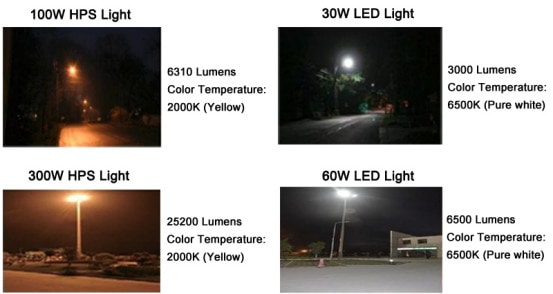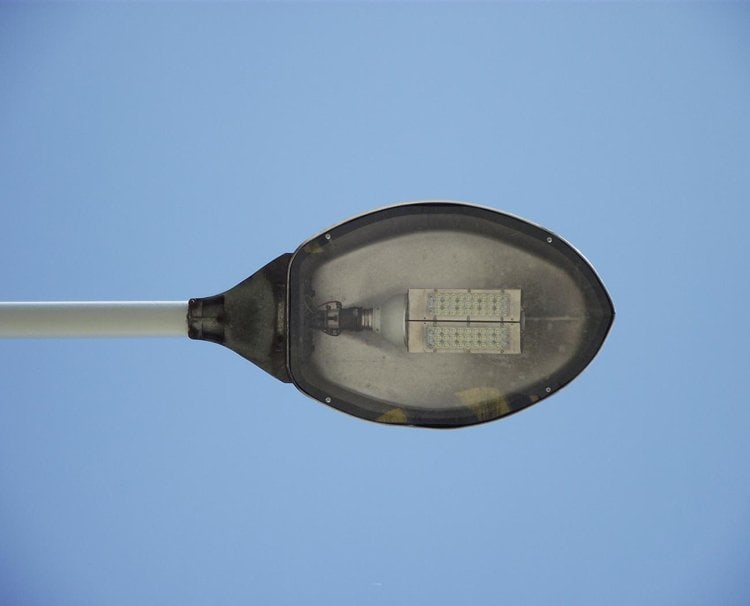A lot of time we are asked what is the equivalent LED product to convert from Metal Halide, High Pressure Sodium or Mercury Vapor. And a lot of time, we have a product in mind that works based on past experience. But how did we come up with that product, and how did we make the original decision on what was the proper replacement? There’s a lot of science that goes into light, color, quality, and each light had it’s own characteristics.
This time I want to talk about the S/P ratio which is usually ignored by most lighting manufacturers and sellers.
What is the S/P Ratio of Lighting?
You might have noticed that some lighting products have an S/P ratio among their specifications. To explain what this means, consider that human vision behaves differently depending on the amount of ambient light available. This applies for both natural and artificial lighting.
Human eyes have two types of photoreceptor cells: cones and rods. The response of cones is dominant during daytime or in well-illuminated indoor spaces, while rods are used mostly in dark environments or at night. Thus, humans have two different visual responses: photopic vision for bright environments, and scotopic vision for dark locations. The two visual responses may overlap under certain conditions like dusk, and this is called mesopic vision.
How Lumens Are Measured in Lighting Products
When the lumen output of lighting products is measured, the specified value is based on how photopic vision would perceive the light source. As a result, rated lumens describe the lighting output better during daytime, or for indoor spaces with plenty of lighting. Photopic lumens can be misleading when comparing lighting products that will be used outdoors at night or in darker indoor environments.
Both types of vision are sensitive to green and yellow light, but their response is very different for other wavelengths. While photopic vision responds better to colors in the red side of the lighting spectrum, scotopic vision responds better to blue tones. As a result, the rated lumen output of a lamp changes for photopic and scotopic vision.
If the output of a lamp is measured as 12,000 lumens under scotopic vision and 8,000 lumens under photopic vision, its S/P ratio is 1.5 (12,000 lm / 8,000 lm). You may notice that some LED replacements for HID lamps have less rated lumens, yet they appear equally bright. This happens because the specified lumens are photopic, even for applications where scotopic vision is more important.
Photopic and Scotopic Lumens
Assume you have an 20,000 lumen high-pressure sodium (HPS) fixture that will be replaced with a 5,000 lumen LED fixture. Based on this data, you may conclude that the new lamps will only deliver 25% of the light provided by the previous system. However, consider the following S/P ratios:
- LED S/P ratio = 2.0
- HPS S/P ratio = 0.5
The scotopic lumens provided by each light source would be the following:
- LED scotopic lumens = 5,000 lm x 2.0 = 10,000 lm
- HPS scotopic lumens = 20,000 lm x 0.5 = 10,000 lm
Both light sources appear equally bright in applications where scotopic vision predominates, such as nighttime outdoor lighting.
When specifying outdoor fixtures, make sure you check how the S/P ratios of the existing system and the proposed upgrade compare. In most cases, the S/P ratio of LED and fluorescent lighting outclasses that of HID lighting – you may find that a product with less rated lumens actually provides better lighting!
Here is a handy chart of common lights and ratios for you to use.
| Light Source | S/P Ratio |
| 1700K Low Pressure Sodium (LPS) | 0.25 |
| 2100K High Pressure Sodium (HPS) | 0.40 |
| 2700K Incandescent | 1.36 |
| 3000K Fluorescent (830) | 1.29 |
| 3000K LED | 1.21 |
| 3000K Quartz Halogen | 1.50 |
| 3500K Fluorescent (735) | 1.24 |
| 3500K Fluorescent (835) | 1.41 |
| 3500K LED | 1.41 |
| 4100K Fluorescent (741) | 1.54 |
| 4100K Fluorescent (841) | 1.65 |
| 4100K LED | 1.65 |
| 4300K Metal Halide | 1.49 |
| 5000K Fluorescent (850) | 1.96 |
| 5000K LED | 1.80 |
| 6000K LED | 2.00 |
| 6500K Fluorescent (865) | 2.20 |
| 6800K Mercury Vapor | 0.80 |




